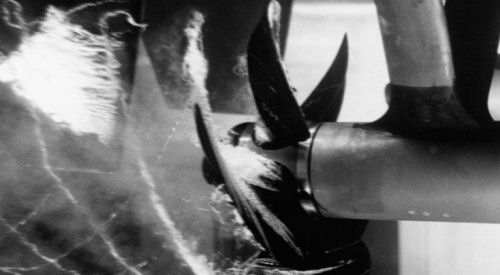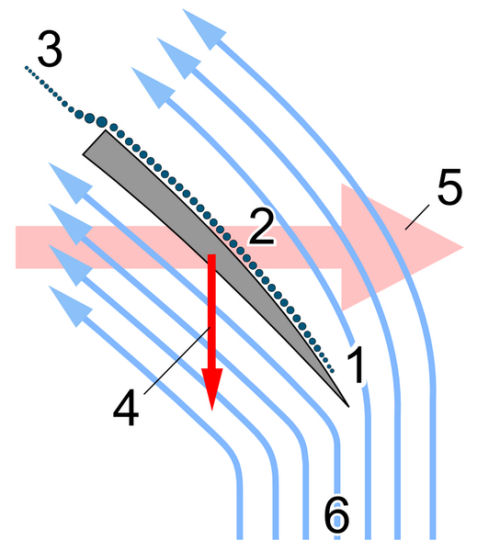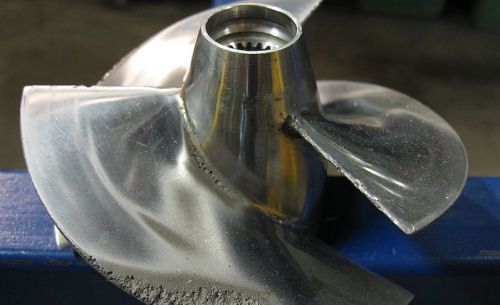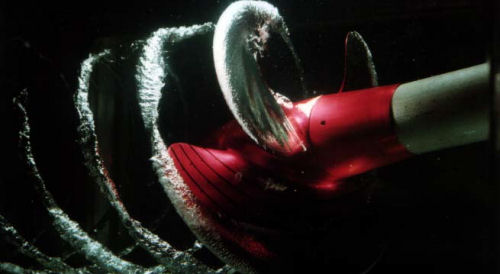Does Your Prop Have Secret Cavitation?
Have you ever run your finger along the face, or edge, of a prop and felt a pitted area? If you have, then you know what cavitation can do to a prop. Given enough use, that pitting will only get deeper and you will end up having to replace the prop. The causes of cavitation have always been somewhat of a mystery to us, so we asked some prop experts to give us the technical explanation for this phenomenon.

Cavitation very commonly occurs on damaged, or imperfect, propellers and can occur if an attempt is made to transmit too much power through the prop. At high rotating speeds or under heavy load (with high blade lift coefficient), the pressure on the inlet side of the blade can drop below the vapor pressure of the water, resulting in the formation of a pocket of vapor, which can no longer effectively transfer force to the water.
To our thinking, cavitation could be defined as the phenomenon of the formation, rapid collapse, and subsequent implosion of vapor bubbles of a flowing liquid in a region where the pressure of the liquid falls below its vapor pressure. As these bubbles collapse, energy is released in the form of a shock wave that can, and often does, damage the surface of the material in question. (Stretching the analogy to a screw, we might say the water thread 'strips'.)
The true cause of cavitation can arise from several factors, but we see them occur most often as a result of leading-edge imperfections, such as nicks, dings, scratches, bends, etc. That said, they can also be caused by improper geometry or upstream imperfections related to the hull, such as hull design/configuration, hull imperfection, incorrectly installed accessories/appendages, etc. Since there are so many possible causes, diagnosing the problem should really be done on a per-case basis.

Cavitation wastes energy, makes the propeller "noisy" as the vapor bubbles collapse, and most seriously, erodes the prop’s surface due to localized shock waves against the blade surface.
A similar, but quite separate issue, is ventilation, which takes place when air is introduced to water around, or to the water flow fed to, a propeller. This can be caused by a number of different sources, such as porting, over-and-through hub propellers, tunnel hulls, extreme motor elevation, excessively high trim angles, stepped hulls, or even hull appendages (transducers, pick-ups, and the like). As the propeller meets the aerated water, the water's flow attachment to the propeller's respective working surfaces is detached. As the water detaches, the propeller's loading is reduced, and the torque applied to the propeller through the shaft can more easily spin the propeller to a much higher rpm even at the same given power input. This not only causes the motor to rev easily, but it reduces the thrust provided by the propeller, slowing the boat's speed and/or acceleration, as well as reducing the propeller's control over the boat (blow out on turning, on holeshot, etc.).

water pump blades.
Drilling Down...
Specifically what happens in cavitation is this: Vapor gases evaporate into the cavity from the surrounding medium; thus, the cavity is not a perfect vacuum, but has a relatively low gas pressure. Such a low-pressure cavitation bubble in a liquid begins to collapse due to the higher pressure of the surrounding medium. As the bubble collapses, the pressure and temperature of the vapor within increases.

The bubble eventually collapses to a minute fraction of its original size, at which point the gas within dissipates into the surrounding liquid via a rather violent mechanism, which releases a significant amount of energy in the form of an acoustic shock wave and as visible light. At the point of total collapse, the temperature of the vapor within the bubble may be several thousand Kelvin, and the pressure several hundred atmospheres.
Cavitation can significantly damage moving parts, and is usually an undesirable phenomenon. It is specifically avoided in the correct design of props and that is why prop fabrication and prop repair must be relegated to the experts.